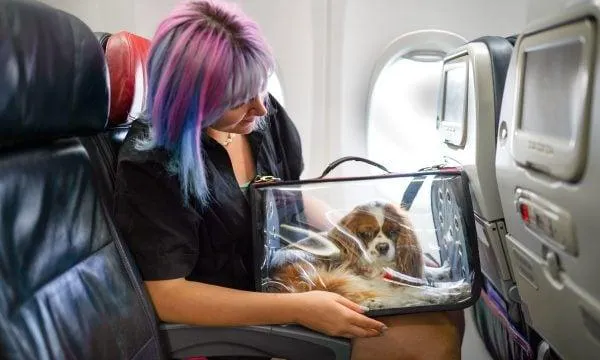A Comprehensive Guide to Pet Transportation Fees
If you’ve ever had to move pets across long distances, you know that pet transportation comes with significant costs. As a pet owner who has relocated with cats and dogs twice, I understand the challenges of planning and budgeting for this process. In this article, I’ll break down the various pet transportation fees you may encounter and provide tips to help save money.
Airline Fees
Flying with pets is often the most straightforward option but can be pricey. Most major airlines charge per-crate fees that vary based on your pet’s size, duration of the flight, and baggage restrictions. For example, a medium-sized dog traveling in cabin on a domestic flight may incur a fee of 0 each way. The cost increases substantially for longer international routes or if your pet must be checked as cargo. Additionally, many airlines limit the number of pets per passenger.
Some carriers like Delta even impose separate fees for advance notice of travel, special paperwork or permits, and veterinary certifications. These additional charges can easily add another $100-200 to your pet’s airfare. It’s crucial to check each airline’s policies thoroughly to budget properly.
Ground Transportation Fees
Driving with pets may seem cheaper upfront but don’t forget fuel costs and potential boarding fees if you take rest stops. Professional pet transportation services offer door-to-door relocation across land but charge substantially.
For example, from my experience using them, Pet Transport Services may charge $300-600 on average for a medium-sized dog depending on the distance. Prices are higher for multiple pets, exotic animals like birds, and transport to remote rural areas. However, these services take responsibility for your pet’s safety, comfort, meals, and paperwork – which is priceless for my peace of mind.
- Train fees: Amtrak allows only service animals and charges $25-50 each way depending on your route.
- Bus fees: Most bus companies like Greyhound prohibit pets except for service animals.
- Car ride fees: Long-distance car rides may require overnight boarding at vet clinics or PetSmart charging $15-30 per night.
International Pet Transportation Fees
Moving pets internationally is kind of like the coolest scavenger hunt ever – seriously! In addition to high airliner costs, you have additional paperwork, health certificates from licensed vets, microchipping or tattoo IDs, and quarantine fees upon arrival in some countries. The costs stack up majorly.

Speaking from my experience relocating a dog from the US to Europe, the total came to around $2500 due to vet checks, documents, crating, and a month-long quarantine in kennels upon entry. Yikes! It’s best to start planning at least 6 months in advance and check each country’s specific restrictions.
How to Save on Pet Transport Fees
Luckily, there are some tricks to cut costs. First, look for discount airlines that may have lower pet fees like Alaska Airlines. Also enquire about consolidators specializing in pet relocation with group discount rates.
Book well in advance whenever possible to get the cheapest rates from airlines or transport services. You can also save on car rental by choosing lower tiers and opt for hotels allowing dogs/cats to skip boarding costs. Using road transport for distances under 500 miles is generally more affordable too.
Another pro tip is to ask your vet for multi-purpose certificates skipping future exams if transferred between clinics. Crates are likewise reusable long-term. Overall, advance planning is hands down your best friend when moving pets!
Common Questions about Pet Transportation Fees
Q. Are pet fees covered by insurance?
Most pet insurance policies do not cover transportation fees like airline charges or driving costs. However, they may reimburse vet expenses for health checks required for travel.

Q. How much can I expect to pay moving a cat?
Cat transportation fees are generally lower than dogs. Expect to pay $100-150 each way on direct flights. Ground transport via services costs $150-300 depending on distance. International cat moves often range $1000-1500 including checks and documents.
Q. What about small animals like rabbits or birds?
Transporting exotic pets is always pricier due to stricter regulations and specialized care needs. Plan to pay a minimum of $300-500 via air or $500-1000+ for ground moves cross-country. International rules are complex so research thoroughly in advance.
Q What if I can’t afford the fees?
As a last resort, look into pet boarding or rehoming locally if you are unable to meet fees for your move. However, try exhausting all budgeting and discount options first to keep the family together if possible.

In Summary…
To reiterate in closing, pet transportation comes with significant hidden costs beyond straightforward fees. The best approach is intensive pre-move planning, research across all transport choices, and following best practices like advance booking to optimize savings. With diligence, you can minimize expenses and ensure a safe, stress-free journey for your furry family members.
I hope this detailed breakdown helps you gain clarity on budgeting pet moves. Feel free to reach out if any other questions come to mind!
Pet Transportation Fee Factors
| Carrier | Base Fee | Additional Pet Fee | Weight Limit |
|---|---|---|---|
| American Airlines | $150 | $125 per carrier container | 100 lbs including container |
| Delta Airlines | $125 | $125 per pet | 70 lbs or under |
| United Airlines | $125 | $125 per pet | 100 lbs including container |
| JetBlue | $125 | $100 per pet | Maximum 20 lbs container included |
| Alaska Airlines | $125 | $75-150 depending on weigh | Maximum 100 lbs including container |
FAQ
-
How much is a standard pet transportation fee?
Most pet transportation companies charge around $75 to $200 for a cat or small dog on a single trip of around 500 miles. The exact price basically depends on distance, size/weight of the animal, and whether there are additional services like airport pickup/drop-off needed. At the same time, bringing multiple pets together might get you a sort of volume discount.
-
Does the fee vary by airline?
Despite using the same transportation company, the price can look a little different if flying with different airlines. This is mainly because airlines have separate pet policies and requirements. For instance, some airlines allow only one pet carrier per passenger while others might let you bring two pets together in the cabin. So it’s best to check directly with the airline on their pet transportation rules and approved carriers. On the other hand, fees usually stay the same for the ground transport part between airports.
-
What factors influence the pet transportation cost?
The price is affected by several things like distance traveled, pet size, additional services required, and mode of transport. Longer routes will of course be more expensive than shorter hauls. Larger/heavier pets need bigger kennels that take up extra space. Air travel fees tend to be higher than ground/car transport. Also, amenities like food, medications, or 24/7 attendance might drive up the total. One could arguesmaller pets get relatively cheaper transport. But is it worth it if Fido feels sad alone in the carrier? You gotta take care of man’s best friend!
-
Is there a fee difference between cat and dog transportation?
Generally, transporting cats costs a little less than dogs of the same size. Maybe it’s because dogs tend to get anxious being cooped while cats usually stay chill. However, price varies more with dimensions/weight rather than species. Around $100 would be average for moving a small cat/dog within 500 miles including ground rides. Perhaps bigger pets like Great Danes may set you back $200-250. But ask the experts at pet transport services for a custom estimate based on your pet’s details.

-
What additional services are available?
Most companies provide extras like insured door-to-door service, traveling attendants, personal kennels/crates, and special handling of medicated/frail pets. Appears to be a safer option than DIY transport. Other value-adds include sending updates, arranging playtime stops, and accommodating flight delays. Did you know services also help with paperwork for long distance/international relocation? Strongly suggested for anxious pup parents!
-
Are there tips to save on pet transportation costs?
To keep fees low, try booking well in advance for competitive rates. Flying in off-peak periods instead of holidays could save 30% or more. See if family/friends are willing road trip buddies too. Quotes may vary between carriers, so get at least 3 estimates. Joining a pet parent group on Facebook may lead to promo codes or discount referrals from pals. In the end, your pet’s safety and comfort should be top priority over saving a few bucks, right?
-
What documents are required for pet transport?
All transported pets need updated vaccinations, a health certificate from the vet, and travel items like leash/crate. Some long flights also demand a pet passport. It’s safest to check directly with the specific airlines on their paperwork policies, which can differamazingly! Microchipping helps prove ownership if papers get misplaced. Don’t risk traveling without the right files – it could end in big quarantine fees or delays getting Fido back. Ask customer service with any other documentation doubts well in advance. Planning is key for a smooth pet trip!
